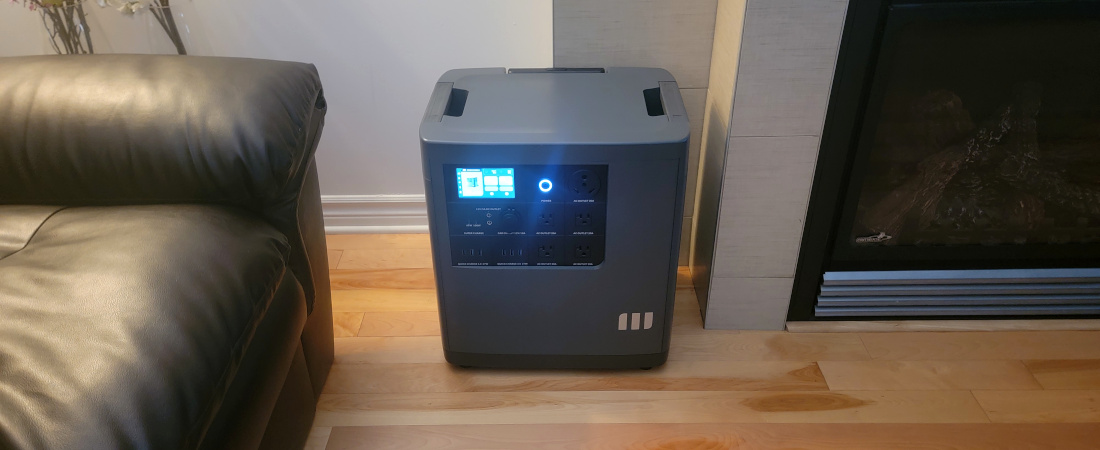TechRadar Verdict
The Mango Power E is the ultimate home power station, providing 3kW of battery and AC output power. The superior cell technology and the possibility of adding extra batteries justify the higher price tag.
Pros
- +
Best-in-class battery chemistry
- +
Fast charging
- +
RV outlet
- +
Expandable battery
Cons
- -
Expensive
Why you can trust TechRadar
The Mango Power E is the newest portable power station from Mango Power that supports an additional battery pack. With an astounding 3kW AC output and 3.53kWh battery storage, the base unit is user-upgradable to 14kWh to guard against extended blackout periods. It comes with a 30A RV socket, super-fast charging, and provides user data through a color display.
The Mango Power E incorporates a retractable handle and two back wheels. Four 20A AC sockets take full advantage of the 3kW inverter. The Mango Power E integrates the best in battery technology with the use of LFP cells made by CATL. Finally, it is a connected station thanks to integrated Wi-Fi, Bluetooth, and a mobile app.
Mango Power E: Pricing and availability
The base unit supports up to 3kW of AC output with a battery capacity of 3.53kWh, for an MSRP of $4000, while an extra 3.53kWh battery will add $2800 to the base price. A package including two Mango Power E, two extra batteries, and a mSocket pro that generates a two-phase output is just below fourteen grand. That is expensive for a consumer-grade power station, resulting in $1/Wh, an above-average price for LFP-type technology. A five-year warranty backs all Mango Power E products.
Pricing for Australia and the United Kingdom have yet to be confirmed.
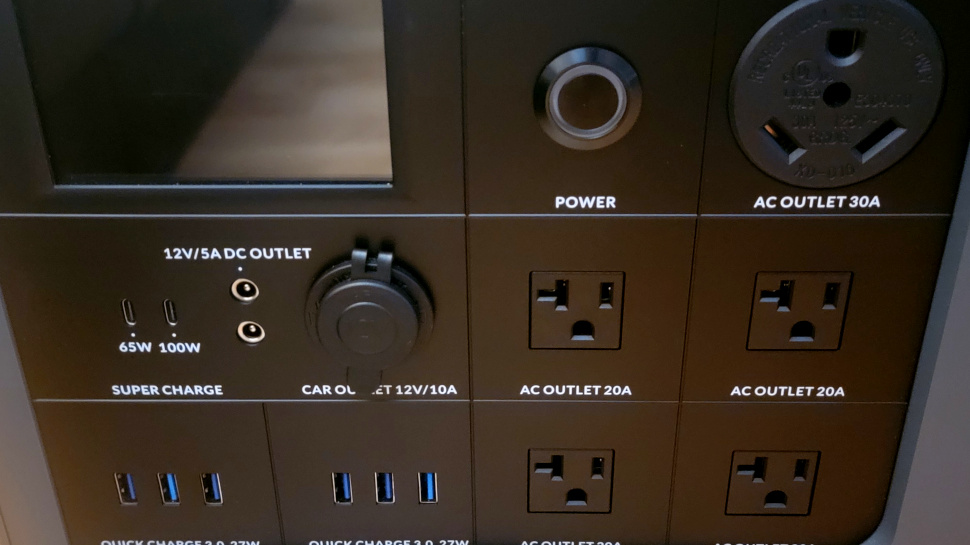
Mango Power E: Design
The Mango Power E power station is in a class of its own. It is heavy at 45.4kg and measures 45.2cm x 34.5cm x 49.4cm. Two handles molded into the plastic case help to carry the case, supported by two wheels at the back. Along with a retractable handle, the Power E looks like a small fridge on wheels. Air vents on the left and right sides provide continuous airflow with the help of fans which can be loud at times. The unit ships with two cables for AC and solar charging.
The front panel has a vibrant 4.3” color graphic LCD that supports touch. Various soft buttons help navigate the main menu. Information about the remaining charge, input, and output power, is displayed clearly. The left of the display also contains status icons indicating when the station connects to the companion mobile application through Bluetooth or Wi-Fi.
The Mango Power E does not lack output sockets. Some, such as the 30A RV TT-30P port, are rarely found on residential power stations, and Mango Power has the luxury to include one partly because of the station’s size. Five high-voltage and eleven low-voltage sockets available to the user are all activated through the LCD menu. The only push button used to turn on the unit requires some practice to get used to. A long press turns the station on, while a short press will turn it off.
Sign up to the TechRadar Pro newsletter to get all the top news, opinion, features and guidance your business needs to succeed!
Four AC outputs next to the RV socket are rated 20A each and can output 3kW. Six USB-A with a combined power of 27W are also present in the low voltage section, while the customary Type-Cs, a 100W and another 65W, are included. Two DC5521 barrel-type ports are capable of 60W each, and one 120W regulated cigar port completes the list of output sockets.
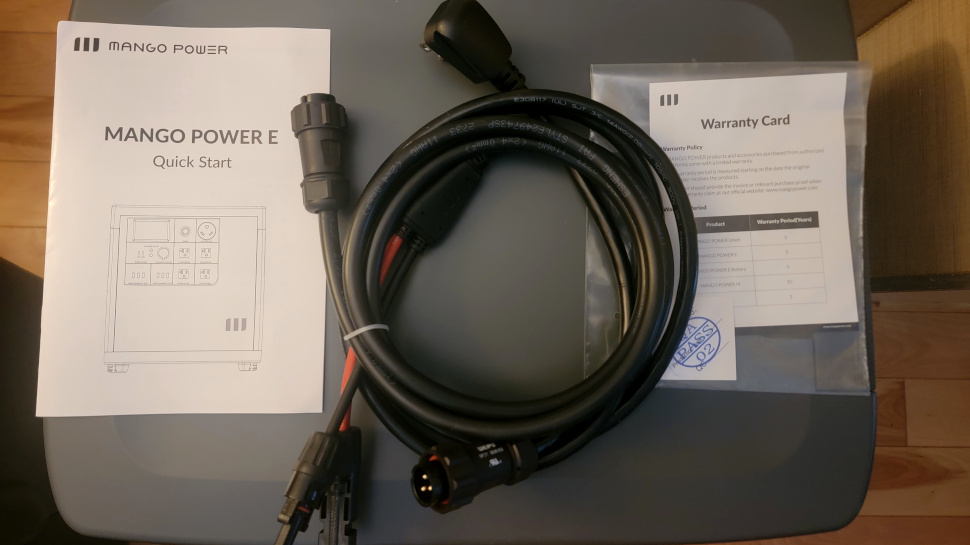
Mango Power E: In use
The Mango Power E uses high-quality LFP cells made by CATL that lose less than 30% capacity after 6000 cycles, resulting in 16 years of use if charged daily. The cells pack more power density than standard NMC lithium technology, making the Power E lighter than other 3.53kWh power stations. Finally, thanks to their robustness, the cells can be charged at a higher current, yielding faster charging times.
The inverter's efficiency is 88% which is expected for this product type. The Mango Power E is quiet when unused but will get noisy under full load at 51dB. The station's output power can exceed the nominal 3kW for short periods, the highest amount being 4.8kW for less than 40ms, helping kickstart high-power motors without any issue.
Charging the station is fuss-free and fast, with three kinds of input supported. On top of having AC and Solar types, the user can also charge the station with an EV charger through the E+ Port. The same port can connect to an extra 3.53kWh battery pack. The AC input supports a maximum of 3kW, giving a charge time from 0 to 80% in less than one hour, something unseen in similar models.
The solar input supports a maximum voltage of 150V at up to 2kW. The recommended configuration is five 400W 12V panels in series, giving a total voltage well below the 150V limit. The user can access the station remotely through the mobile application. It replicates all functionalities available on the base unit, including input and output power consumption and battery capacity. The app promises connectivity either using Bluetooth or Wi-Fi.
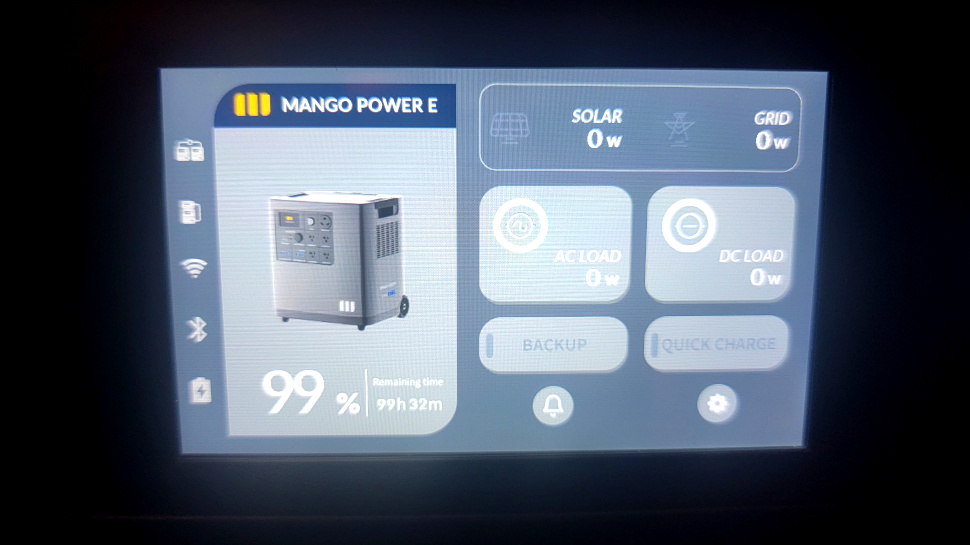
Mango Power E: The competition
Power stations have evolved from units capable of powering small appliances to systems that can power an entire home, also called microgrids. Mango Power has settled for the latter, with the E being their second edition. Few manufacturers are selling microgrids, and Bluetti is one of them.
The Bluetti AC300 inverter's external B300 battery offers similar AC output performance and battery autonomy to the Mango Power E. The latter is unique because the battery type is a better LFP grade. The E offers a much higher charging rate than Bluetti, translating to faster charging times. The dual system from Bluetti is also bulkier and more prone to failures since the two units are connected using a cable.
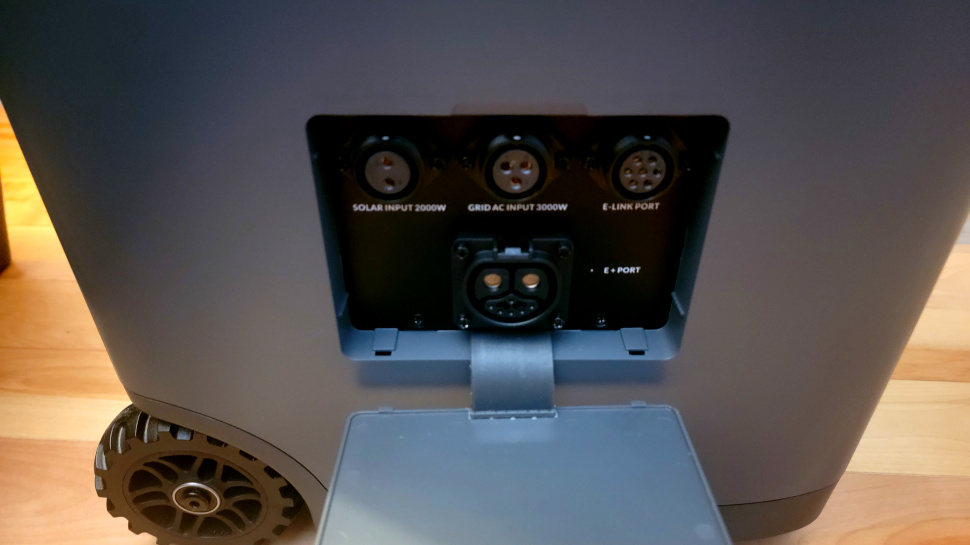
Mango Power E: Final verdict
Mango Power brings best-in-class battery technology, ease of use, and versatility to its new E model. The battery offers more than 6000 charge cycles which, even when used daily, should be among the last thing to fail. The power station supports sixteen output ports with six distinct outlets and an AC RV power port, making the E ideal on the road.
The Mango Power E can turn into a high-capacity power generator with the help of solar arrays and an additional battery pack. The 150V DC input for charging isn't the highest on the market but should cover many combinations of solar panels and give decent charge times. There are only a few drawbacks to the Mango Power E, one being that the app needs some polishing.
We've rated the best UPS (Uninterruptible Power Supply).
My interest has been piqued by everything electronic since a young age, with a penchant for the dark art of tearing things apart. My daily duty is to marry software and hardware modules and I have to admit that this is much harder than cooking. When I’m not busy at work, I’m on the lookout for the latest and greatest hack! I am passionate about portable power generators (or power stations) as well as maker products such as the Raspberry Pi and any similar SBC (single board computers)
